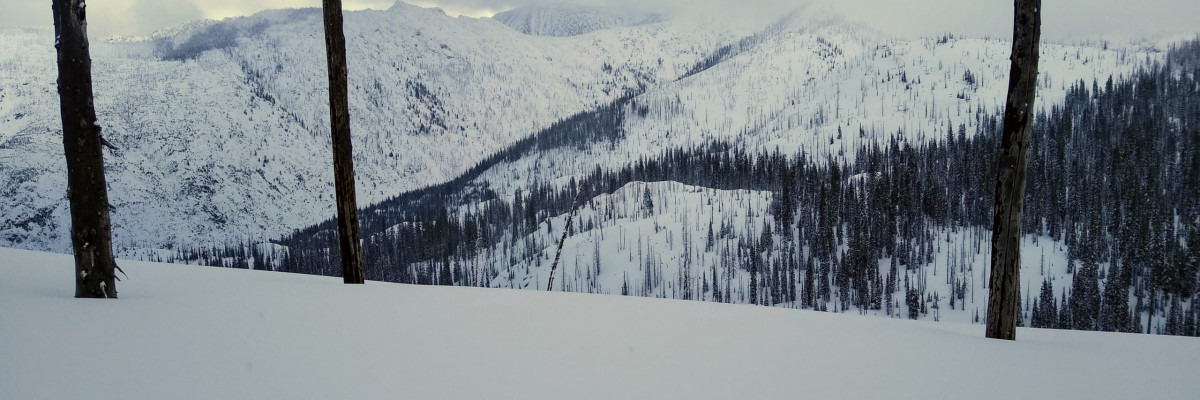The avalanche danger for the West Central Montana backcountry is MODERATE. Approach avalanche terrain with caution as triggering a large avalanche is possible.
Good morning, this is Todd Glew with the West Central Montana Avalanche Center’s avalanche advisory for January 28, 2020. This danger rating does not apply to operating ski areas, expires at midnight tonight, and is the sole responsibility of the U.S. Forest Service.
Weather and Snowpack
Mountain temperatures are currently in the high teens to mid 20’s F. Winds are light out of the WSW, with ridgetop winds gusting into the 20’s. During the past 24 hours, favored locations have picked up .2-.3 inches of SWE, equating to a few inches of snow.
This season has been rather scary in regards to our avalanche problems. We have been plagued by persistent weak layers buried in our snowpack, with the possibility of triggering an avalanche that may take out the entire seasons snowpack. Based on recent observations, it seems that our snowpack is gaining strength. We are starting to see a more stable snowpack in many locations, while others we are not. The chances of triggering a large avalanche are decreasing, but the consequences are not. Play your cards wisely if you decide to hop into avalanche terrain.
Our primary concern is wind slab avalanches. With a decent amount of new snow today accompanied by wind, be on the lookout for active snow transport. The new snow and wind may cause wind drifts, which look like bulbous or pillowy like features found on the leeward side of ridges or in cross-loaded terrain. This type of avalanche problem will most likely be found in open terrain or near ridge tops. Use caution when approaching steep terrain as wind slabs are most sensitive during and or soon after being transported. Another thing to keep in mind is that we have a widespread slick melt-freeze crust buried just below the surface of the snow. The melt-freeze crust could work as a good sliding surface, making wind slabs more reactive and much larger. Keep a close eye on how the new snow is reacting today.
Our secondary concern in persistent slab avalanches. Throughout the winter, we have had numerous human and natural triggered persistent slab avalanches. During the past few days, observations have been showing that our buried weak layers are beginning to heal. We are not fully there yet in all locations, but things are moving in the right direction. A likely spot to trigger a persistent slab avalanche would be in areas with a shallow snowpack (3-4 feet or less). Other places you are most likely to trigger this type of avalanche would be in thin rocky terrain, around cliff bands, or on convexities. Remember, if you do trigger a persistent slab avalanche, it may break to the ground, taking out the entire seasons snowpack.
Bottom line: Today is a storm day, so pay attention to any changes with the new snow. Look out for red flags such as cracking, collapsing, recent avalanches, and wind transported snow. Approach avalanche terrain with caution as triggering a large avalanche would take out the entire seasons snowpack.
Avalanche and Weather Outlook
Today through this evening, the mountains are expected to get up to a foot of new snow accompanied by moderate winds. Mountain temperatures will range from 24 to 37 F, with SW winds in the teens and gusts up to 31MPH. Snow is expected to taper off on Wednesday, followed by more snow later this week and a cold front later this weekend. Stay tuned.
Expect avalanche conditions to rise during or shortly after any rapid changes in regards to wind and new snow. Our snowpack is beginning to heal but could be reactivated by new snow and wind.
Any observations are appreciated. If you get out in the mountains, please send us your observations here. Thank you very much to those of you who have been sending in observations, as it is incredibly beneficial.
Ski and ride safe.
Education Opportunities:
Want to learn more about avalanches? We still have spaces available on Avalanche Courses throughout the winter. Take a look here for a full list of courses.
























